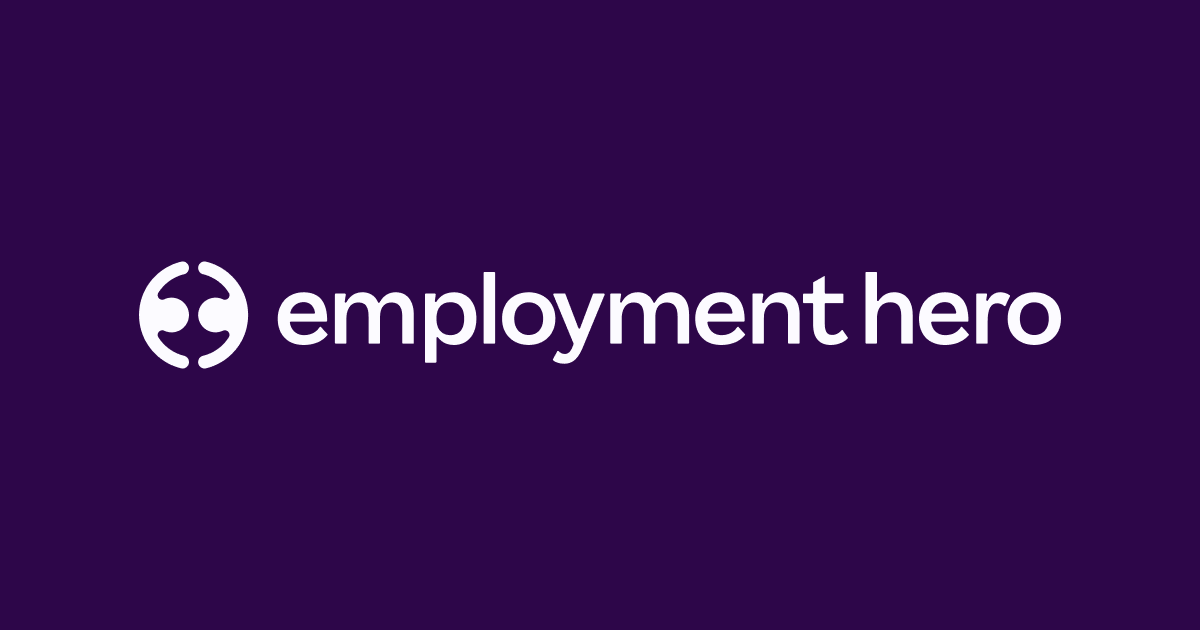As one of the 3 main financial statements, a cash flow statement is an essential tool for understanding a company’s financial health, assessing its liquidity, and confirming how much cash it has on hand.
Along with the balance sheet and income statement, this set of financial documents are required for both private and public companies.
A standard cash flow statement format encompasses three main sections: operating activities, investing activities, and financing activities.
This guide will cover not only a cash flow statement template, but also how to prepare your cash flow statement, what to include in the three main sections, and how the direct and indirect methods differ.
We’ll also cover IAS 7 requirements for cash flow statements, including recent changes companies should keep in mind.
For more information, you can also read cash flow statements explained here.
To prepare a statement more efficiently, download our free cash flow template.
Here’s what we’ll cover
Completing the main sections of the cash flow statement
To prepare a cash flow statement, follow these six steps:
1. List the opening balance
Begin by listing the opening balance of cash and cash equivalents for the reporting period.
This figure should equal the closing balance from the previous reporting period.
The starting balance can be placed at the top or the bottom of the statement.
2. Input cash flow related to operating activities
This section can use either the direct or the indirect method.
- When using the direct method, record all cash received and all cash paid. Then, calculate the total.
- When using the indirect method, start by listing the company’s profit or loss for the reporting period (under IFRS, which applies to UK companies). Then, take steps to reverse the effect of the accruals. Adjust for elements like depreciation and amortisation, and then calculate the total.
Under IFRS, companies may choose from several different starting points when using the indirect method.
Options include:
- Profit or loss
- Profit or loss before tax
- Operating profit or loss
- Profit or loss from continuing operations
List cash inflows and outflows from operating activities:
- Receipts from goods or services sold: Add any cash receipts from goods (for a product-based company) or services (for a service-based company).
- General operating and admin expenses: Subtract any cash payments to suppliers for goods and services related to the company’s core business activities. Also include office expenses, rent and utilities for the company’s facilities.
- Wage expenses: Subtract any cash used to pay the company’s employees, executives and directors.
- Income tax payments: Subtract any cash used to pay for the company’s income tax.
- Other operations: Add any cash receipts that fall outside of the core business activities. Such as license income, the share of profits from joint ventures or grant monies received.
- Depreciation and amortisation adjustments: Add in the value of any depreciation and amortisation to undo the effect of these accruals.
- Change in inventory: Subtract the value of any increases in inventory or add the value if inventory has decreased.
- Change in operating assets: Subtract the value of any increases in operating assets such as accounts receivable and monies owed to the business or add the value if operating assets have decreased.
- Change in operating liabilities: Add the value of any increases in operating liabilities such as accounts payable or subtract the value if operating liabilities have decreased.
Note that the process is similar to that for calculating the change in operating assets but that the process is reversed.
3. Input cash flow related to investing activities
In the next section, list cash received and paid from investing activities.
Tally all cash inflows and outflows related to buying and selling property and assets that increase the value of the business.
Note that IFRS allows for interest and dividend receipts to be included in either investing or operating activities.
The classification of these receipts must be consistent between reporting periods.
- Receipts from the sale of property and equipment: Add any cash received from selling assets such as property and machinery.
- Collection of loans: Add in cash from receiving financing from investors, mortgages or loans.
- Proceeds from disposal of investments: Add in any cash received from the sale of marketable securities, or other investments such as contracts or IP rights.
- Purchase of property and equipment: Subtract any investments in assets such as property and machinery.
- Loans to others: Subtract payment of monies in the form of loans made to others, typically subsidiary companies.
- Purchases of investments: Subtract any cash paid from purchasing marketable securities, or other investments such as contracts or IP rights.
4. Total cash flow related to financing activities
Here, list the cash received and paid from financing activities.
Tally all cash inflows and outflows from fundraising and repaying debts that allow the company to operate or grow.
Note that IFRS allows for interest and dividend payments to be reflected in either financing or operating activities.
Their classification must remain consistent between reporting periods.
- New banks loans: Add any cash received from bank loans or other creditors.
- Proceeds from issuing common stock: Add any cash received from the sale of equity, stock, or bonds.
- Repayment of bank loans: Subtract any cash paid to repay loans and debt, either from investors, mortgages or the bank.
- Dividend and interest payments: Subtract any cash paid to pay dividends and interest. Under IFRS, dividend and interest payments may be classified as operating activities instead.
5. Determine the total change in cash
Calculate the total change by adding together the operating, investing, and financing activities.
This figure reflects the total increase or decrease in the company’s cash and cash equivalents.
6. Calculate the cash at end of year
Finally, determine the ending balance. Add or subtract the increase or decrease in cash and cash equivalents to the starting balance for the cash flow statement’s reporting period.
A positive balance indicates that the company has more cash flowing in than out.
A negative balance confirms that the company has more cash flowing out than in.

The difference between direct and indirect cash flow statements
Both IFRS and HMRC allow the direct or the indirect method of calculating operating activities.
While both methods provide the same end result, they have several important differences.
| Direct method | Indirect method | |
| Accounting method | Uses cash accounting, which tallies cash when it’s received or paid | Uses accrual accounting, which tallies cash when it’s earned |
| Starting point for calculating operating activities | Not applicable; simply lists cash inflows and outflows from operating activities | Starts with profit or loss under IFRS; starts with net income under GAAP |
| Estimated work level | Tends to be higher, as it requires listing all cash transactions | Tends to be lower, as it works back from the income statement |
| IFRS requirements | Must reconcile net income to net cash flow from operating activities | None |
| GAAP requirements | Must reconcile net income to net cash flow from operating activities | None |
IAS7 requirements for cash flow statements
IFRS uses IAS7 (International Accounting Standard 7: Statement of Cash Flows) for preparing cash flow statements.
Below are some requirements to keep in mind when using this standard.
Operating, investing, and financing activities
Any company using IFRS standards must analyse cash flows using 3 types of activities:
- Operating activities: Focus on cash received and paid from revenue-producing activities
- Investing activities: Focus on acquiring and disposing long-term assets and investments
- Financing activities: Focus on borrowing funds and repaying debts
Direct method for reporting operating activities
For the direct method for reporting operating activities, IAS7 requires reconciling net income to net cash flow from operating activities.
This extra step aligns the statement of cash flows with the income statement.
Indirect method for reporting operating activities
IFRS also allows the indirect method for reporting operating activities. IAS7 requires using profit or loss as the starting point.
As of 2024, companies may define this starting point in one of several different ways.
However, IAS7 requires a standard starting point for reporting periods starting January 1, 2027 (read more below).
Reporting investing and financing activities
IAS7 requires companies to report most investing and financing activities gross, categorised by type of receipt or payment.
However, this standard requires certain activities to be reported net, including:
- Cash received or paid on behalf of customers
- Cash received or paid for items in large amounts, with rapid turnover, and with short maturities
- Cash received or paid related to financial institution deposits
Dividend and interest payments and receipts
IAS7 allows some flexibility when reporting dividend and interest activity.
Both may be considered operating activities.
Companies have the option to consider dividend and interest receipts as investing activities instead.
Companies may also consider dividend and interest payments as financing activities.
However, IAS7 requires companies to maintain consistent classification between reporting periods.
Disclosures
Non-cash investing and financing doesn’t appear on the cash flow statement.
However, IAS7 requires companies to disclose these activities in other financial statements.
Recent IAS7 changes to cash flow statement preparation (2024)
A recent amendment to International Financial Reporting Standards (IFRS), issued in April 2024, means that for annual periods starting on or after 1 January 2027, companies must use the operating profit or loss subtotal as the starting point for the indirect method in cash flow statements.
If your business chooses to adopt this change early, it’s important to clearly disclose this decision in your financial statements, following IFRS guidance.
This update aims to make cash flow statements more consistent and easier for investors to compare.
Cash flow statement templates
Cash flow statement template
Download our cash flow statement Excel templates
Download now

What are the 3 main sections of a cash flow statement?
Whether a company uses IFRS (International Financial Reporting Standards) or GAAP (generally accepted accounting principles), a cash flow statement consists of three main components:
Operating activities
Operating activities refer to the company’s primary revenue-producing activities.
Think of them as standard business activities that generate cash inflows and outflows.
Revenue covers cash coming into the business from goods and services, and out of the business to wages, operating expenses and income tax payments.
Investing activities
Investing activities refer to investments the company makes using cash, not debt.
However, for investment companies, investments are reflected in the company’s operating activities.
Investing activities cover buying and selling long-term assets.
The buying and selling of investments such as IP rights or contracts and the collection and issuance of loans from the business to subsidiaries of the company.
Financing activities
Financing activities refer to cash investments in the company.
They include cash inflows from raising funds and cash outflows from repaying debt.
Cash flow from financing activities can come from receiving financing from investors, issuing payments to shareholders or repaying debt principal.
What are cash and cash equivalents?
Cash flow statements reflect a company’s balance of cash and cash equivalents at the beginning and end of the reporting period.
These statements also show the total change from the beginning to the end of the period.
Cash
Cash includes both currency and demand deposits.
The latter refers to money held in bank accounts from which the depositor can withdraw at any time without significant financial risk or penalty.
In addition to domestic currency, cash can also include foreign currency.
The value of any foreign currency should reflect the exchange rate on the date the company received the cash.
Cash equivalents
Cash equivalents are investments designed to meet short-term cash commitments.
These highly liquid investments have a maturity date of 3 months or less after acquisition.
In addition, they can easily convert into known cash amounts.
As a result, cash equivalents have a very low risk of changes in value.
Cash equivalents can include:
- Money market funds, government bonds, and corporate bonds that meet the definition above and maintain an insignificant risk of changes in value
- Shares that were acquired just prior to maturity and that have a firm redemption date
- Bank overdrafts that are part of the company’s cash management strategy, meaning the company regularly fluctuates between positive and negative demand deposit balances
What’s the difference between an income statement and a cash flow statement?
As two of the three main types of financial statements, both cash flow and income statements offer insight into a company’s financial performance.
Yet they do so from different perspectives.
Cash flow statements
Cash flow statements confirm how liquid a company is.
They reflect cash paid and received, revealing how much cash a company has on hand at the end of a reporting period.
Income statements
Income statements also called profit and loss (P&L) statements confirm how profitable a company is.
They reflect revenue and expenses accrued during a reporting period, including non-cash accounting like depreciation and amortisation.
What isn’t included in a cash flow statement?
A cash flow statement doesn’t reflect:
- Debt instruments that have a maturity date of more than 3 months after acquisition and that carry significant risk of changes in value.
- Most shares as they have a significant risk of changes in value and they aren’t convertible to a preset amount of cash.
- Cryptocurrency and gold because they aren’t readily convertible to predetermined amounts of cash.
- Restricted cash and cash equivalents that a company can’t readily access because of legal restrictions or financial controls, such as funds owned by a subsidiary.
- Non-cash transactions that don’t have a direct effect on a company’s cash inflows or outflows
What’s the difference between GAAP and IFRS for cash flow statements?
GAAP and IFRS use similar guidelines for preparing cash flow statements.
However, the way the two accounting standards classify cash flow activities differs.
IFRS considers the nature of the activity when classifying cash flow.
If using the indirect method, GAAP will use items from the income statement (net income, depreciation expense, etc) to prepare the cash flow statement.
Here are several ways these differences affect cash flow statements:
Bank overdrafts
If your business uses bank overdrafts that are repayable on demand and these overdrafts are part of your regular cash management, IAS 7 allows you to include them as cash equivalents in your cash flow statement.
This means that when your cash balances often move between positive and negative, you can show these overdrafts alongside cash and other cash equivalents, giving a clearer picture of your day-to-day cash position.
Restricted cash
IFRS requires companies to disclose restricted cash (i.e., inaccessible balances held by the company’s subsidiary) in the cash flow statement.
UK IFRS requires restricted cash to be disclosed separately in the notes to the financial statements.
Dividend and interest receipts
IFRS allows dividends and interest paid to be classified as operating or investing activities.
UK IFRS allows flexibility in classifying dividend and interest payments, which may be treated as operating or financing activities depending on the company’s policy.
Dividend and interest payments
IFRS allows dividends and interest paid to be classified as operating or financing activities.
Under UK IFRS, companies may classify dividend and interest payments as either financing or operating activities, provided the classification is applied consistently across reporting periods.
Discontinued operations disclosures
IFRS requires companies to disclose cash flow from discontinued operations either in the cash flow statement or in its notes.
UK IFRS requires companies to disclose cash flows from discontinued operations either within the cash flow statement or in accompanying notes, ensuring transparency for investors.
Sage financial reporting software can help with your reporting and the management and growth of your business.
Our cash management software also automates tasks and provides real-time, reliable cash flow visibility.
Sage Intacct has 150 built-in financial reports enabling you to easily create custom reports and leaving you with more time to focus on your business and prepare your financial statements.
Cash flow statement template
Download our cash flow statement Excel templates
Download now

News
Berita
News Flash
Blog
Technology
Sports
Sport
Football
Tips
Finance
Berita Terkini
Berita Terbaru
Berita Kekinian
News
Berita Terkini
Olahraga
Pasang Internet Myrepublic
Jasa Import China
Jasa Import Door to Door



